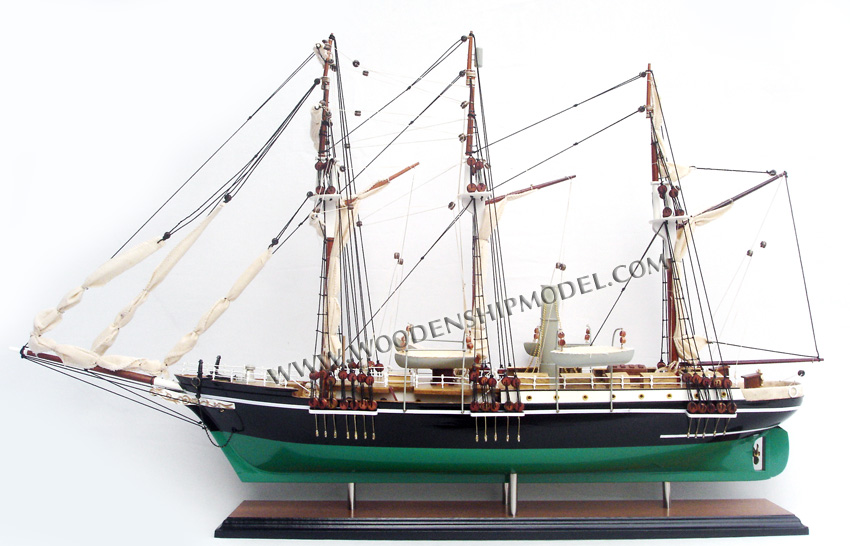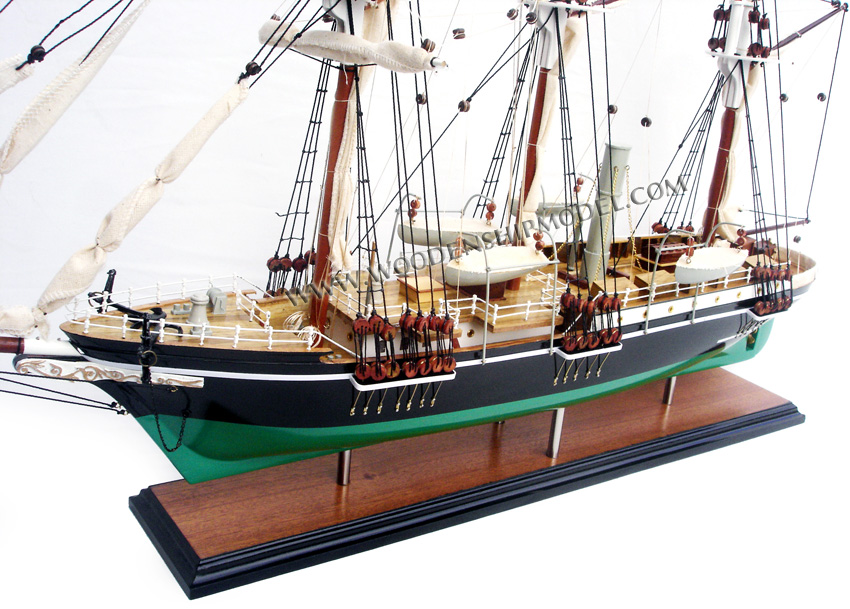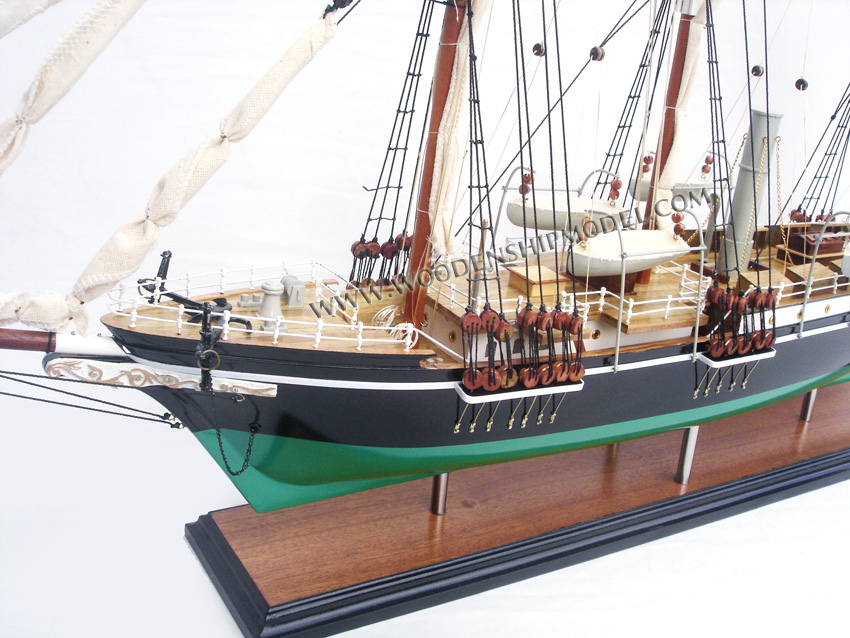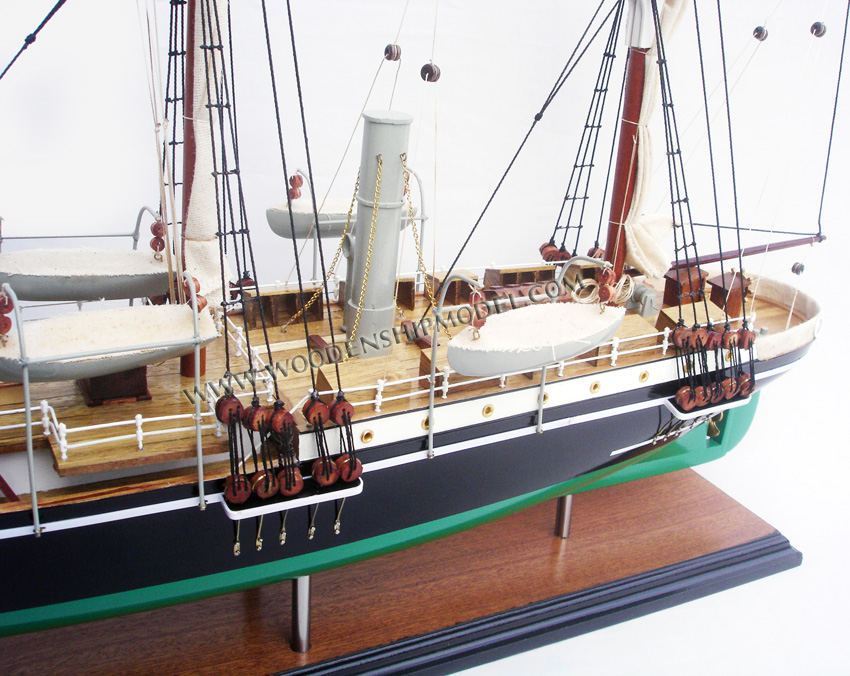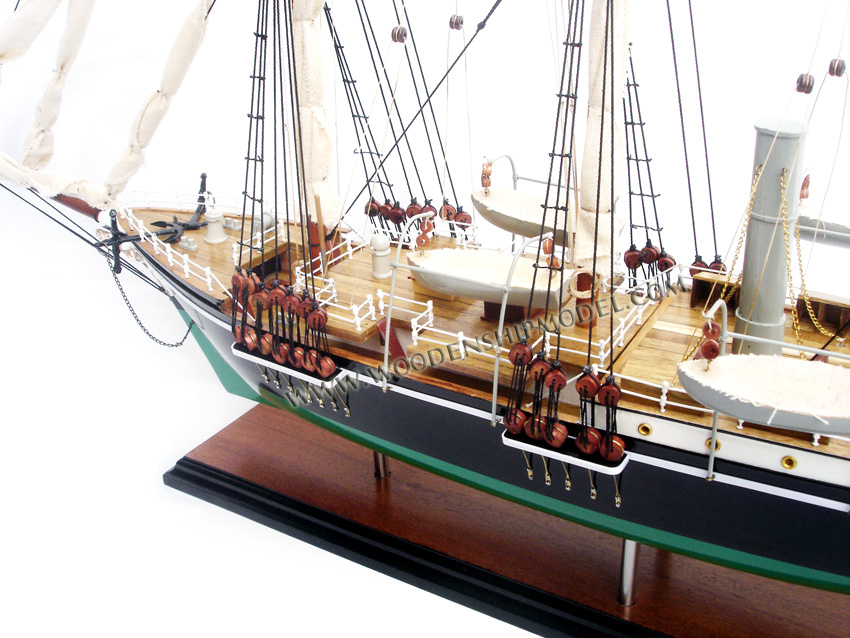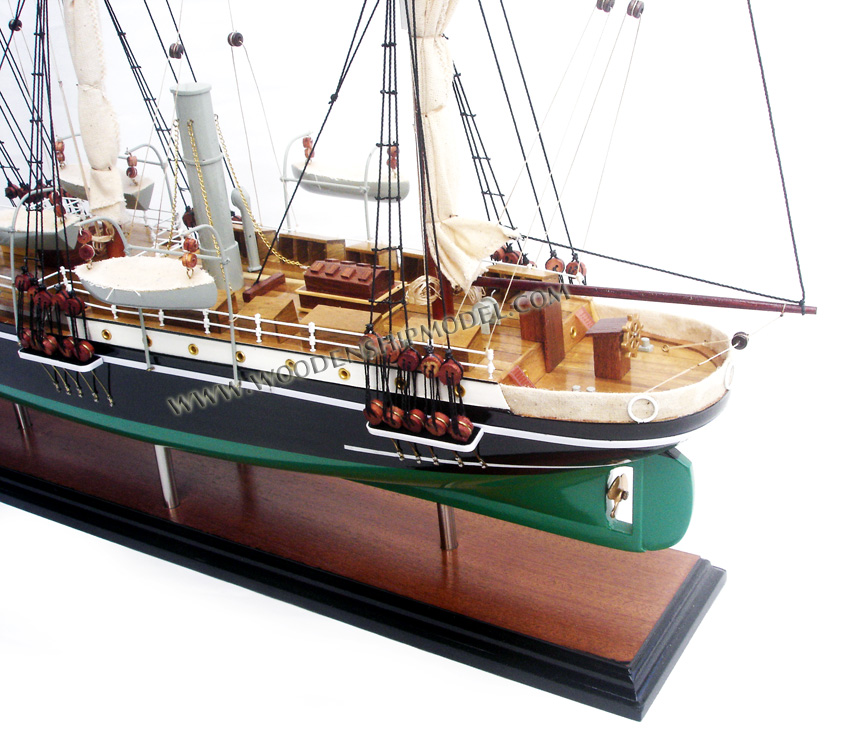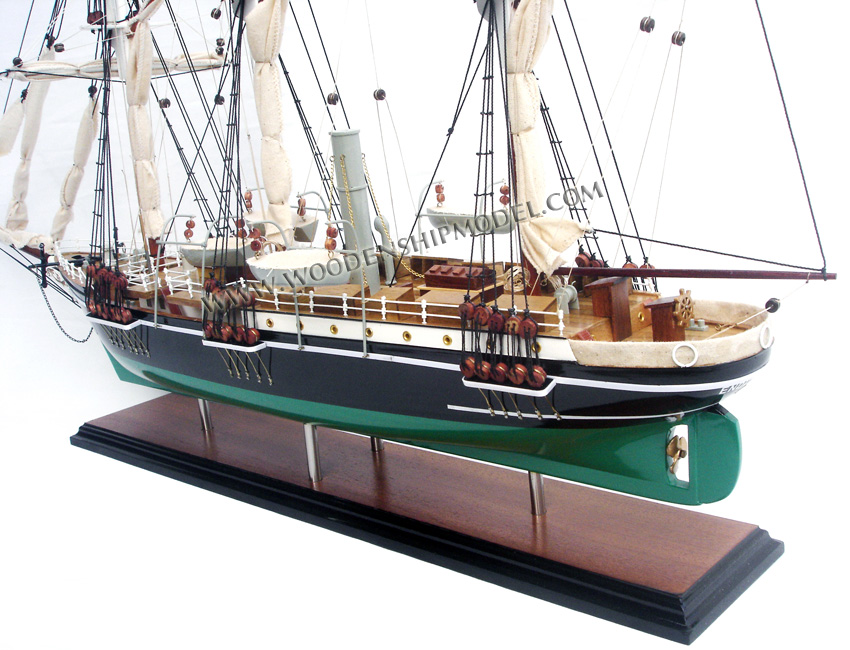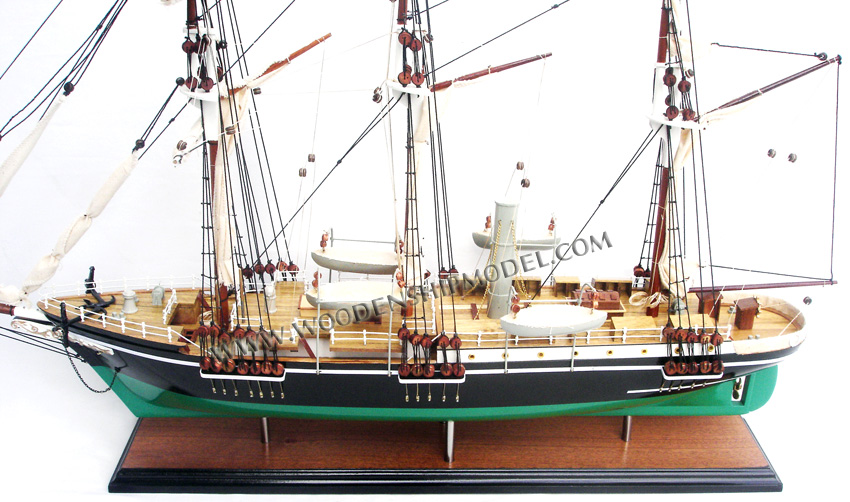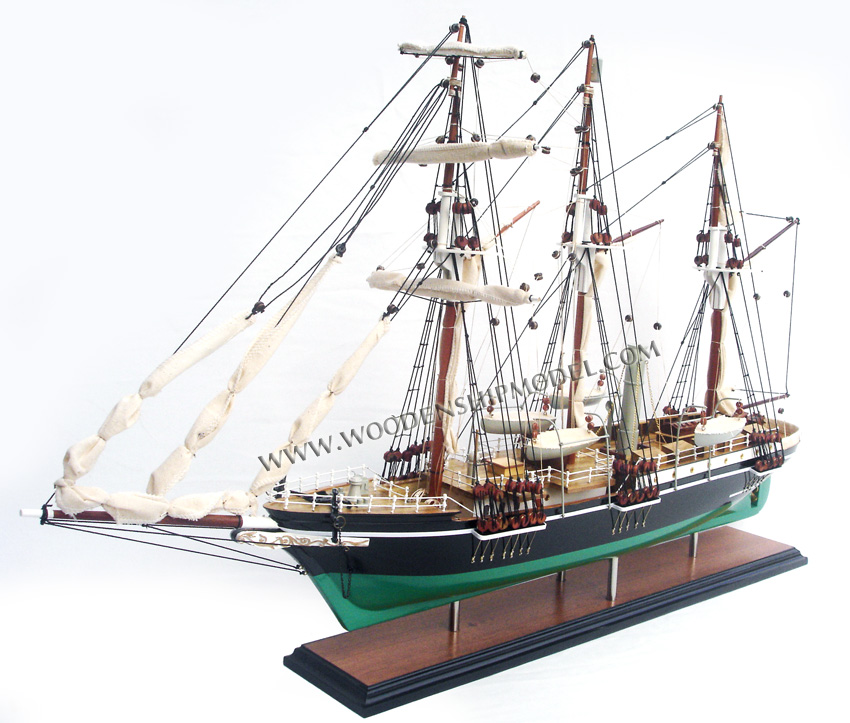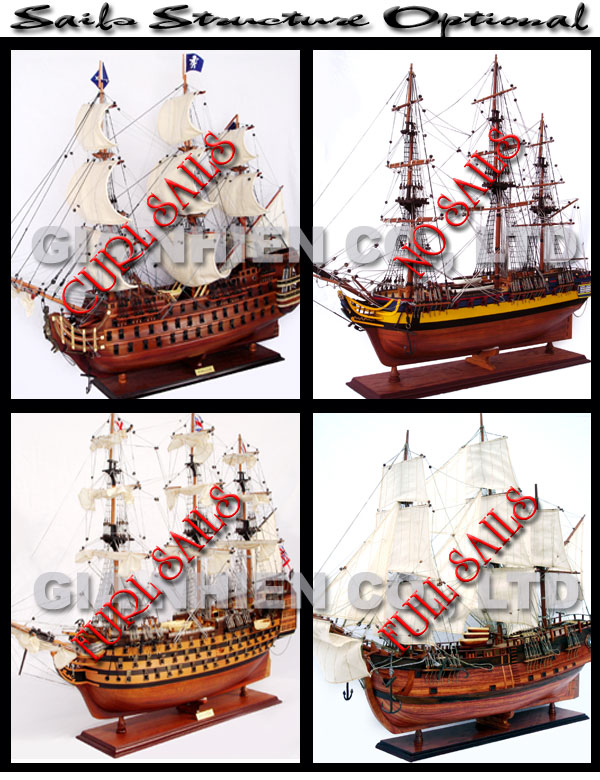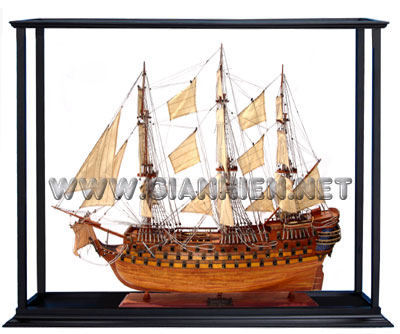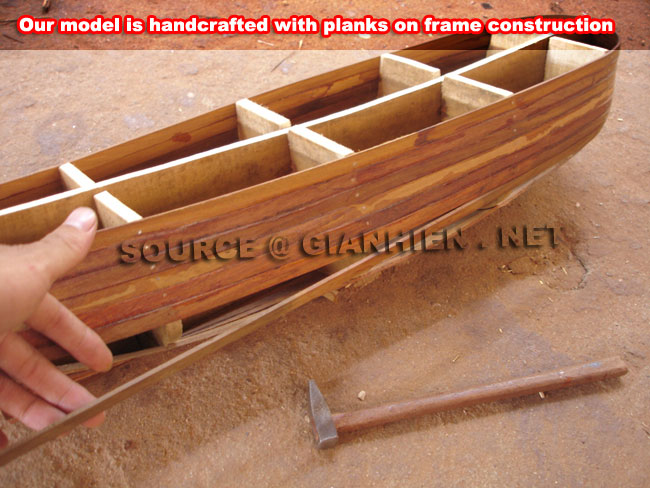|
HISTORY
In Brief
The Endurance was
the three-masted barquentine in which Sir Ernest Shackleton
sailed for the Antarctic on the 1914 Imperial Trans-Antarctic
Expedition. She was launched in 1912 from Sandefjord in Norway
and was crushed by ice, causing her to sink, three years later
in the Weddell Sea off Antarctica.
Design and construction
Designed by Ole Aanderud Larsen, the Endurance was built at the
Framnæs shipyard in Sandefjord, Norway and fully completed on
December 17, 1912. She was built under the supervision of master
wood shipbuilder Christian Jacobsen, who was renowned for
insisting that all men employed under him not just be skilled
shipwrights, but also be experienced in seafaring aboard whaling
or sealing ships. Every detail of her construction had been
scrupulously planned to ensure maximum durability, for example
every joint and every fitting cross-braced each other for
maximum strength
She was launched on December 17, 1912 and was initially
christened the Polaris (eponymous with Polaris, the North Star).
She was 144 feet (43.9 m) long, with a 25 foot (7.6 m) beam and
weighed 350 tons (356 metric tons). Though her black hull looked
from the outside like that of any other vessel of a comparable
size, it was not. She was designed for polar conditions with a
very sturdy construction. Her keel members were four pieces of
solid oak, one above the other, adding up to a thickness of 7
feet, 1 inch, while her sides were between 2 1/2 feet and 18
inches thick, with twice as many frames as normal and the frames
being of double thickness. She was built of planks of oak and
Norwegian fir up to two and one half feet thick, sheathed in
greenheart, a notably strong and heavy wood. Her bow, where she
would meet the ice head-on, had been given special attention.
Each timber had been made from a single oak tree chosen for its
shape so that is natural shape followed the curve of her design.
When put together, these pieces had a thickness of 4 feet, 4
inches.
With her three masts, the forward one was square-rigged, while
the after two carried fore and aft sails, like a schooner. As
well as sails, Endurance had a 350 hp (260 kW) coal-fired steam
engine capable of driving her at speeds up to 10.2 knots (19
km/h).
By the time she was launched on December 17, 1912, Endurance was
perhaps the strongest wooden ship ever built, with the possible
exception of the Fram, the vessel used by Fridtjof Nansen and
later by Roald Amundsen. However, there was one major difference
between both ships. The Fram was bowl-bottomed, which meant that
if the ice closed in against her she would be squeezed up and
out and not be subject to the pressure of the ice compressing
around her. But since the Endurance was designed to operate in
relatively loose pack ice she was not constructed so as to rise
out of pressure to any great extent.
Ownership
She was built for Adrien de Gerlache and Lars Christensen. They
intended to use her for polar cruises for tourists to hunt polar
bears. Financial problems leading to de Gerlache pulling out of
their partnership meant that Christensen was happy to sell the
boat to Ernest Shackleton for GB£11,600 (approx US$67,000), less
than cost. He is reported to have said he was happy to take the
loss in order to further the plans of an explorer of
Shackleton's stature '. After Shackleton's purchasing her,
she was rechristened Endurance after the Shackleton family motto
"Fortitudine vincimus" (By endurance we conquer).
Final voyage
Shackleton did not sail with Endurance from Plymouth, England on
August 6, 1914 when it set course for Buenos Aires, Argentina,
but joined the ship there with other crew members after Captain
Frank Worsley led the poor ocean going vessel to South America.
This was Endurance's first major cruising since her completion
and amounted to a shakedown cruise. The trip across the Atlantic
took more than two months. Built for the ice, her hull was
considered by many of its crew too rounded for the open ocean.
On October 26, 1914 Endurance sailed from Buenos Aires to her
last port of call, the Grytviken whaling station on the island
of South Georgia off the southern tip of South America, where
she arrived on November 5. She departed from Grytviken for her
final voyage on December 5, 1914 towards the southern regions of
the Weddell Sea.
Two days after leaving from South Georgia, Endurance encountered
polar pack ice and progress slowed down. For weeks Endurance
twisted and squirmed her way through the pack. She kept moving
but averaged less than 30 miles per day. By January 15,
Endurance was within 200 miles of its destination, Vahsel Bay.
However by the following day heavy pack ice was sighted in the
morning and in the afternoon a blowing gale developed. Under
these conditions it was soon evident progress could not be made,
and Endurance took shelter under the lee of a large grounded
berg. During the next two days Endurance dogged back and forth
under the sheltering protection of the berg.
On January 18 the gale began to moderate and thus Endurance, one
day short of her destination, set the topsail with the engine at
slow. The pack had blown away. Progress was made slowly until
hours later Endurance encountered the pack once more. It was
decided to move forward and work through the pack, and at 5pm
Endurance entered it. However it was noticed that this ice was
different from what had been encountered before. The ship was
soon engulfed by thick but soft ice floes. The ship floated in a
soupy sea of mushy brash ice. The ship was beset. The gale now
increased its intensity and kept blowing for another six days
from a northerly direction towards land. By January 24, the wind
had completely compressed the ice in the whole Weddell Sea
against the land. The ice had packed snugly around Endurance.
All that could be done was to wait for a southerly gale that
would start pushing, decompressing and opening the ice in the
other direction. Instead the days passed and the pack remained
unchanged.
Endurance drifted for months while remaining beset in the ice in
the Weddell Sea and drifted with it. The ice kept compressing it
until Endurance could not endure the pressure and was crushed on
October 27, 1915. She finally sank bow first on November 21,
1915.
The Endurance is considered the last ship of her kind.
Crew
The crew of the Endurance in its final voyage was made up of the
28 men listed below:
Sir Ernest Shackleton, Leader
Frank Wild, Second-in-Command
Frank Worsley, Captain
Lionel Greenstreet, First Officer
Tom Crean, Second Officer
Alfred Cheetham, Third Officer
Hubert Hudson, Navigator
Louis Rickinson, Engineer
Alfred Kerr, Engineer
Alexander Macklin, Surgeon
James McIlroy, Surgeon
James Wordie, Geologist
Leonard Hussey, Meteorologist
Reginald James, Physicist
Robert Clark, Biologist
Frank Hurley, Photographer
George Marston, Artist
Thomas Orde-Lees, Motor Expert and Storekeeper
Harry "Chippy" McNish, Carpenter
Charles Green, Cook
Walter How, Able Seaman
William Bakewell, Able Seaman
Timothy McCarthy, Able Seaman
Thomas McLeod, Able Seaman
John Vincent, Boatswain
Ernest Holness, Stoker
William Stephenson, Stoker
Perce Blackboro, Steward
Blackboro was originally refused a post aboard the vessel due to
his young age and inexperience and decided to stow away, helped
to sneak aboard by William Bakewell, a friend of his, Tim
McCarthy and Walter How. By the time he was found, the
expedition was far enough out that Shackleton had no choice but
to make him a steward. Blackboro eventually proved his worth,
earning the Bronze Polar Medal, and the honor of becoming the
first human being ever to set foot on Elephant Island. His name
is also the matter of some debate -it is sometimes spelled
Percy, or Blackboro, or in other ways.
Modern history
Alfred Lansing wrote a book titled Endurance: Shackleton's
Incredible Voyage about the ordeal that Shackleton and his men
endured aboard the ship. It became a bestseller when first
published in 1959. Subsequent reprints have made it a recurrent
bestseller; the last time being in the late 1990's.
Two Antarctic patrol ships of the British Royal Navy have been
named Endurance in honour of Shackleton's ship. The first HMS
Endurance (originally named Anita Dan) was launched in May 1956
and awarded Pennant number A171 sometime later. She acted as an
ice patrol and hydrographic survey ship until 1986. The current
HMS Endurance is a class 1A1 ice-breaker, bought from Norway in
1992 where she had been known as MV Polar Circle. She is based
at Portsmouth but makes annual forays to Antarctica where she
can penetrate through 0.9 meters of ice at a speed of 3 knots.
She has a complement of 126 marine personnel and carries two
Westland Lynx helicopters.
|

